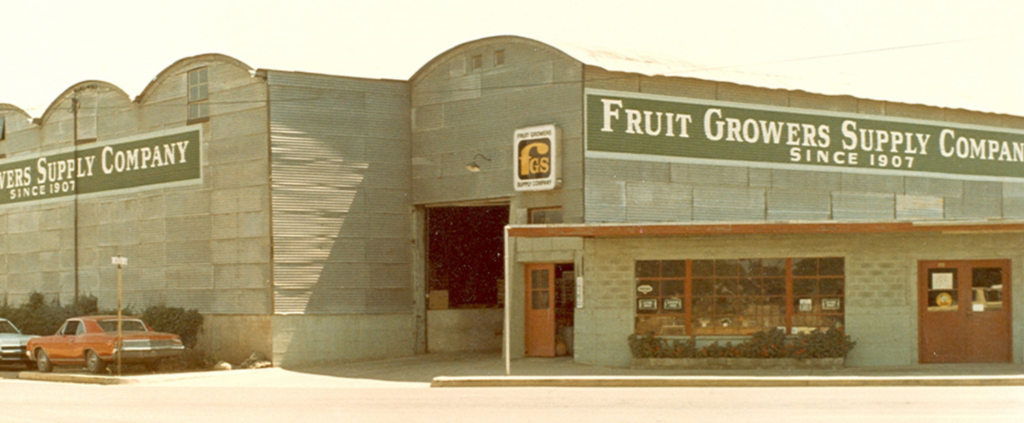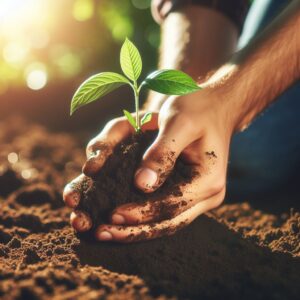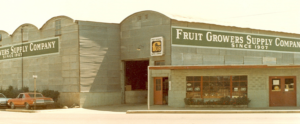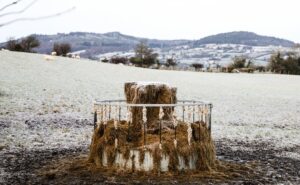
FGS Historic Photo.png
 “I’ve been a forester with Fruit Growers for 12 years,” says Joel Wilhelm. As the Washington Timberlands Manager, he oversees 36,000 acres of commercial timberland in Washington State. It’s a unique position at Fruit Growers Supply — one that is so geographically remote, he’ll sometimes go three months without experiencing an in-person interaction with another Fruit Growers employee. Even so, Joel loves the job and the company, making him the perfect candidate for this month’s installment of “Who We Are.”
“I’ve been a forester with Fruit Growers for 12 years,” says Joel Wilhelm. As the Washington Timberlands Manager, he oversees 36,000 acres of commercial timberland in Washington State. It’s a unique position at Fruit Growers Supply — one that is so geographically remote, he’ll sometimes go three months without experiencing an in-person interaction with another Fruit Growers employee. Even so, Joel loves the job and the company, making him the perfect candidate for this month’s installment of “Who We Are.”
You manage Fruit Growers’ forest properties in Washington State. What’s the primary purpose of all that timber?
We have 36,000 acres of commercial timberland in Washington, where we grow timber for log and lumber production. We grow the trees from seedlings, all the way up to 40–55 years old. Then we harvest them and market the logs to either domestic sawmills in our region or export the logs. Our focus is to maximize return while maintaining sustainability. We make sure we’re not over-harvesting, because we never want to deplete that resource.
What kind of trees are you growing?
Here on the Olympic Peninsula, where our Hoh tree farm is located, we primarily grow western hemlock, western red cedar, and Sitka spruce. Our other two tree farms constitute our Cascade block, and on those farms, its primarily Douglas fir, with some True fir and western hemlock in the higher elevation areas.
How big is the overall team?
We’re fairly lean. We have a general manager. I’m the Timberlands manager in Washington and we have another Timberlands manager in Oregon who covers that tree farm. We also have an Inventory Manager and a Log Accountant. So currently we have five people for 60,000 acres spread throughout Oregon and Washington.
What’s happening right now, as we move through the spring?
We just finished up our planting, which occurs in late winter when the seedlings are still dormant. Now we’re doing pre-commercial thinning, where we go into a younger stand and cut out a portion of it, which allows the remaining trees to grow at a faster rate. We pre-commercial thin 300 to 400 acres annually in Washington, and that lasts for a couple months. Then things progress into site treatment, roadside spray, road maintenance, and road construction throughout the summer. We harvest throughout the year.
You’ve been working as a Fruit Growers forester for 12 years. What keeps you in this role?
Variety, I’m able to be involved in just about every aspect of forest management. From planting, thinning, engineering, to harvesting and marketing. That keeps every day exciting. I enjoy working directly with a variety of contractors to help get the job done. I also feel very vested in the tree farm. That sense of ownership helps to motivate us to make the best management decisions, decisions that will maximize returns in both the present and future. There’s also freedom to make decisions to the best of our ability and learn from that process. With the right people, I think that is key to maturing as a team.
Related
Source link
2025-04-21 05:24:47
Karl Hoffman is a distinguished agriculturalist with over four decades of experience in sustainable farming practices. He holds a Ph.D. in Agronomy from Cornell University and has made significant contributions as a professor at Iowa State University. Hoffman’s groundbreaking research on integrated pest management and soil health has revolutionized modern agriculture. As a respected farm journalist, his column “Field Notes with Karl Hoffman” and his blog “The Modern Farmer” provide insightful, practical advice to a global audience. Hoffman’s work with the USDA and the United Nations FAO has enhanced food security worldwide. His awards include the USDA’s Distinguished Service Award and the World Food Prize, reflecting his profound impact on agriculture and sustainability.




